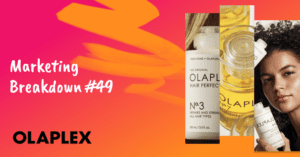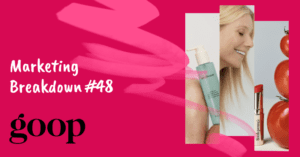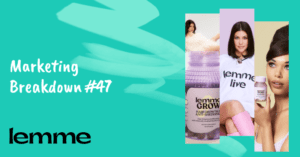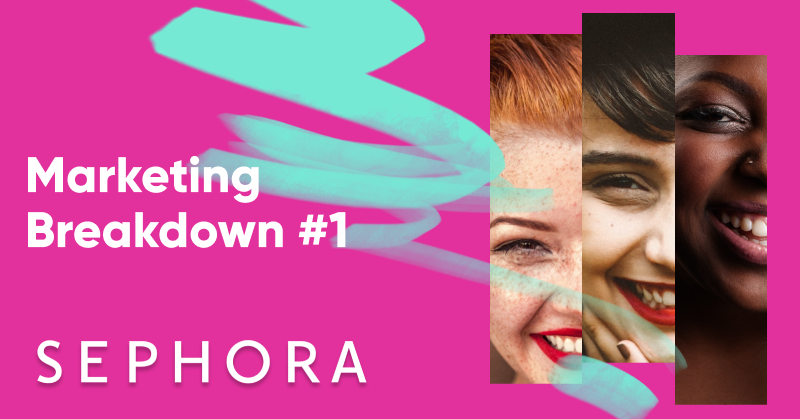
Since its launch in 1970, Sephora has been a true disruptor in the cosmetics industry.
Today, Sephora is a global brand that generated an impressive $10 billion in revenue in 2019.
What’s the secret behind their worldwide success? They tapped into something very early on—Millennials don’t buy makeup the same way as older generations. They value personalization and want to feel connected to the brand.
Sephora took note and changed the way people buy cosmetics. Think about their famous in-store shopping experience and how it aligns with their onsite experience for online customers.
We were curious how they did it. So we looked at the steps Sephora took to create a delightful shopping experience that gives customers two choices:
1. Shop
2. Shop more
Step 1: Understanding your customers’ needs
One of the main reasons behind Sephora’s ongoing success is its ability to adapt to changing customer preferences. As Millennials became the driving force in the cosmetic retail market, Sephora needed to appeal to a new group: who are heavily targeted on social media, educated on current trends, and open to discovering new (and often expensive) brands.
And that meant finding a way to connect with them on social media. Think about how Cicapair’s cream continued to sell out after trending on TikTok.
Another driver behind Sephora’s ongoing success is its experiential retail campaign. They were one of the first companies to offer personalized services in their brick-and-mortar stores, such as:
- Personalized assistance from industry professionals: Customers can use the “in-store companion” on the Sephora app to book in-person sessions with makeup and beauty consultants who can help customers find the best cosmetic brands and products for their personal beauty traits.
- Makeup tutorials featuring each season’s new releases: Sephora offers a wide range of makeup classes, given by professionals: including fundamental makeup classes for beginners, skincare tutorials, and even advanced lessons on highlighting and contouring.
- Complimentary makeovers: Sephora offered customers of in-person stores a free 15-20 minute makeover with a Sephora beauty expert who would focus on a specific feature (like concealing blemishes, using eyeliner, or applying blush). Customers who reached the Rogue level of Sephora’s rewards program were eligible for longer, full-facial makeovers.
These features helped make the store stand out from its competitors by turning every in-person shopping experience into a memorable one.
Step 2: Driving sales through personalization
In 2017, Sephora realized they needed to combine their physical and digital retail teams if they wanted to remain the global leader in cosmetic retail.
“We brought in-store and digital under one roof, along with customer service,” said Mary Beth Laughton, the Executive Vice President in charge of Sephora’s omniretail strategy at the time. “It’s changed the way we think about sales metrics, engagements, and experiences across channels.”
And this strategy really paid off. Sephora gained a complete picture of their customers’ buying strategies by using digital and physical retail data. They could look at these three strategies:
- How shoppers engaged with sales associates in brick-and-mortar stores
- What customers purchased online and in-person
- How customers engaged with their website and mobile app
Sephora then used this data to enhance the sales journey of their customers. They created a custom-tailored retail experience for each shopper that made it easier to find the products they’re looking for. By bringing this level of personalization to their online stores, Sephora used an online customer care concept known as Customer Value Optimization to drive digital sales.
Step 3: Make people aware of your brand and products
What makes Sephora’s strategy any different than their competitors’ marketing campaigns?
Like many of their competitors, they were quick to use influencers as part of their marketing strategy. The results weren’t great.
Sephora worked with several micro-influencers to promote new products, but something was missing. Their influencer campaign didn’t feel genuine, and it wasn’t delivering the results they had hoped. So, they went back to the drawing board to revisit their influencer strategy.
This time, Sephora moved away from people who cultivated a small following in the cosmetics and beauty industry (micro-influencers) and turned to genuine storytellers. They used real people who use the products Sephora sells––people who could give customers what they wanted: authentic, attention-grabbing stories. Some examples of authentic storytellers include:
- Myfacestory: Gave authentic conversations about acne and how to manage breakouts, without stigmatizing the condition.
- FlawlessKevin: Popular LGBT+ influencer Kevin Ninh challenged gender roles while showing everyone that it’s possible for them to look their best.
“We were trying to get a sense from the community what was meaningful to them in beauty and see what kinds of conversations they were having around issues of beauty,” said Deborah Yeh, Sephora‘s CMO, in an interview with Fast Company. “Not just our perspective as a company.”
Sephora did this by:
- Having their employees give authentic testimonials
- Partnering with popular beauty bloggers like Kyrah Stewart and Olivia Jade
- Focusing on building long-term relationships with influencers

Previously, Sephora worked with influencers on an as-needed basis. Now they’ve been starting to focus on long-term collaboration. It enabled Sephora to create a sense of community through their influencers and turn credible voices into effective brand ambassadors.
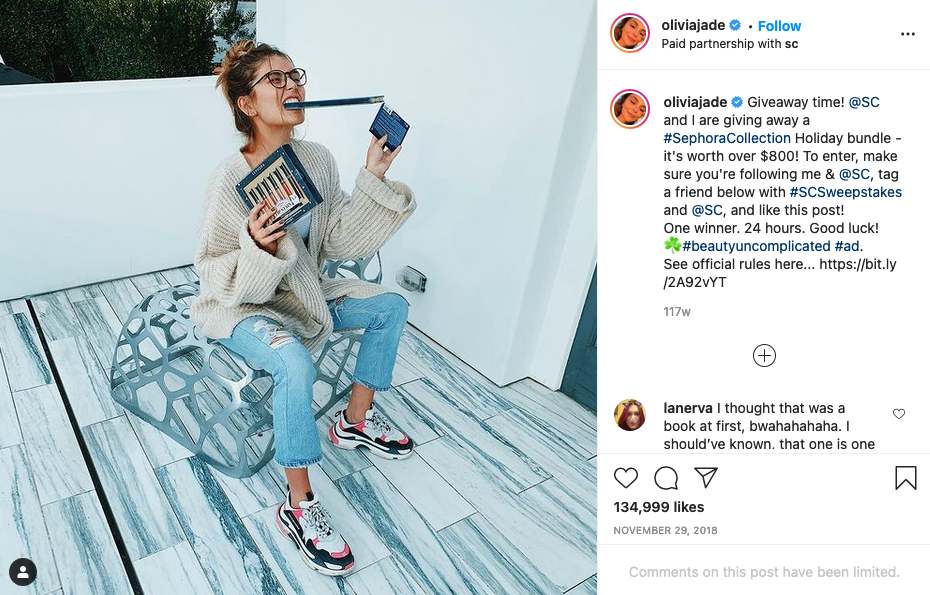
Partnering with beauty bloggers meant that Sephora’s influencer campaign was hyper-focused. The selected influencers amassed a following by creating content about cosmetics, meaning most of their followers are interested in what Sephora sells.
They were quick to take a stand on important social issues, especially those surrounding diversity and accurate representation in the media.
It was another important step in strengthening brand loyalty, especially with conscious consumerism on the rise. According to a survey conducted by Sprout Social, a whopping 70% of customers expect brands to take a stand on social and political issues.
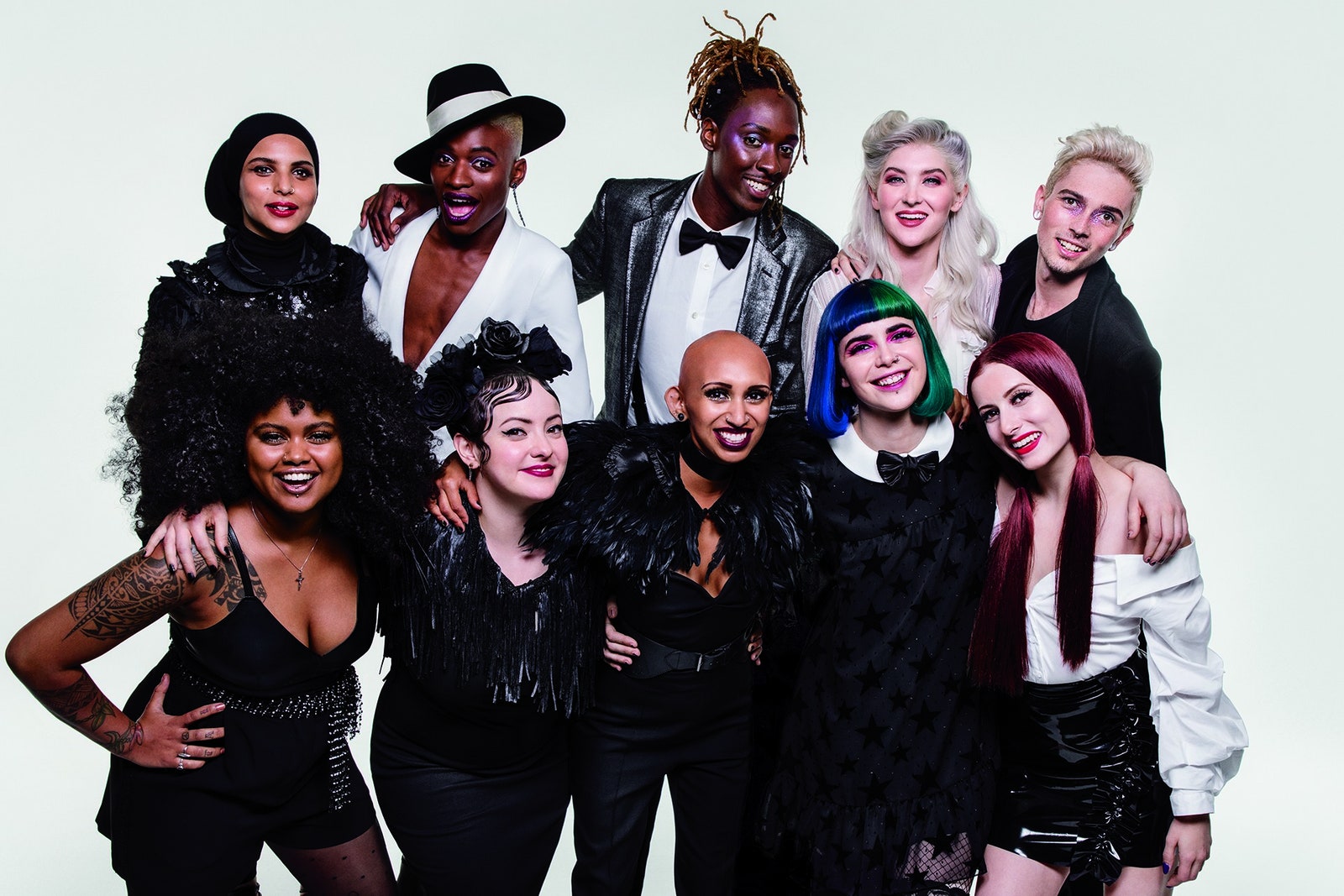
Source: Glamour
Popular campaigns include:
- We Belong to Something Beautiful: Celebrated diversity, representation, and inclusivity by featuring models from different backgrounds, ethnicities, and age groups.
- Reach Out and Gift (pictured above): This campaign focused on the importance of representation and inclusivity but used actual Sephora employees as models. It helped give a face to the brand, which is an effective way to increase customer engagement.
- Identify as We: Challenged the ideas of gender norms by showcasing models from non-binary and transgender communities.
Sephora also promoted its Classes for Confidence program during these campaigns. This program offers free makeup-lessons to people facing major life events, such as cancer recovery and gender transitions.
Step 4: Amplifying authentic voices
In 2019, Sephora expanded its influencer marketing campaign by launching #SephoraSquad.
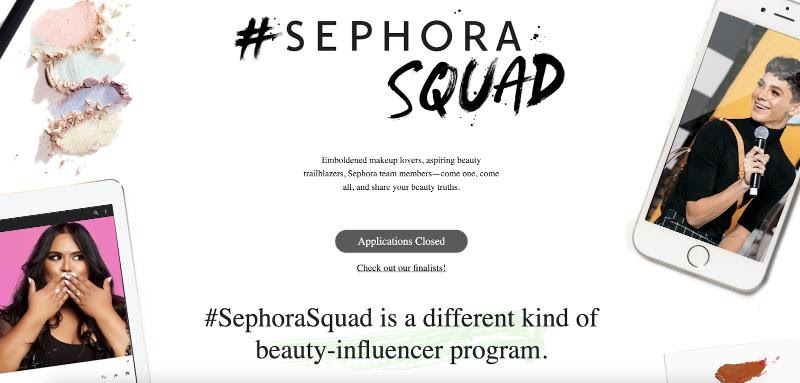
This campaign was a little different from their previous influencer projects. Instead of seeking out active influencers, they cultivated their own brand ambassadors. They did this by reaching out to their customers and offering free products, professional coaching, and other incentives for promoting their merchandise.
The launching of #SephoraSquad was an opportunity to make the Sephora brand a springboard for promoting aspiring content creators in the beauty and cosmetics industries.
“We felt it was time to take influencer relationships to the next level,” said Deborah Yeh, Sephora’s CMO. “We wanted to amplify the beauty community in a larger way and expand the number of voices and perspectives we were using in our work.”
Sephora’s influencer marketing strategy went beyond promoting products. They developed content that had value, like makeup tutorials and skincare routines. While they continued to support up-and-coming beauty influencers, Sephora started working with bigger names in the industry who had an established following.
One of their most successful collaborations was with Mixed Makeup.
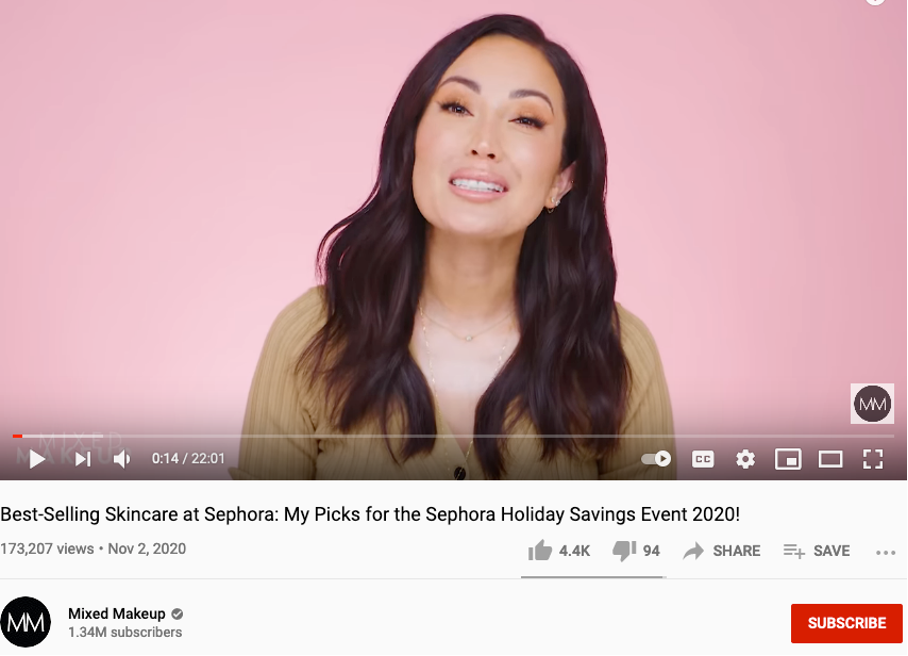
Step 5: Help customers make informed purchasing decisions
Sephora carries 3,000 cosmetic brands such as the Sephora Collection–– its own line of makeup, haircare, skincare, and other beauty accessories. The company has always prided itself on giving customers access to a wide variety of products to choose from.
But having such an extensive inventory comes with another set of problems. Sephora had to create an e-commerce site that
- Wasn’t cluttered and difficult to navigate through
- Gave customers access to their entire product catalog
- Didn’t confuse or overwhelm customers
On top of that, customers need to be certain they’re buying the right products. And when there are more than 3,000 items to choose from, finding the perfect face cream or shade of foundation for your skin type can be really tricky.
If left unchecked, these problems could increase cart abandonment and cost the company millions in lost revenue.
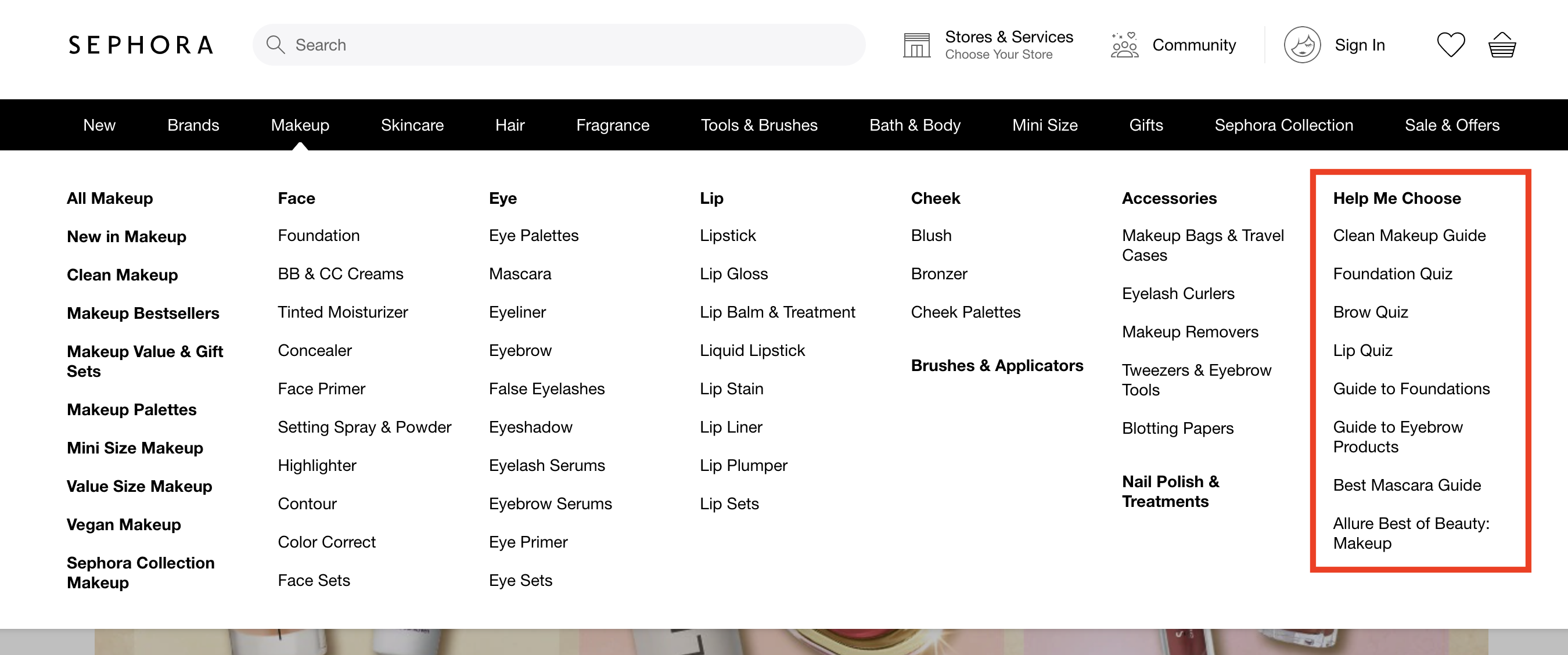
To address this, Sephora created a “Help Me Choose” section on their website.
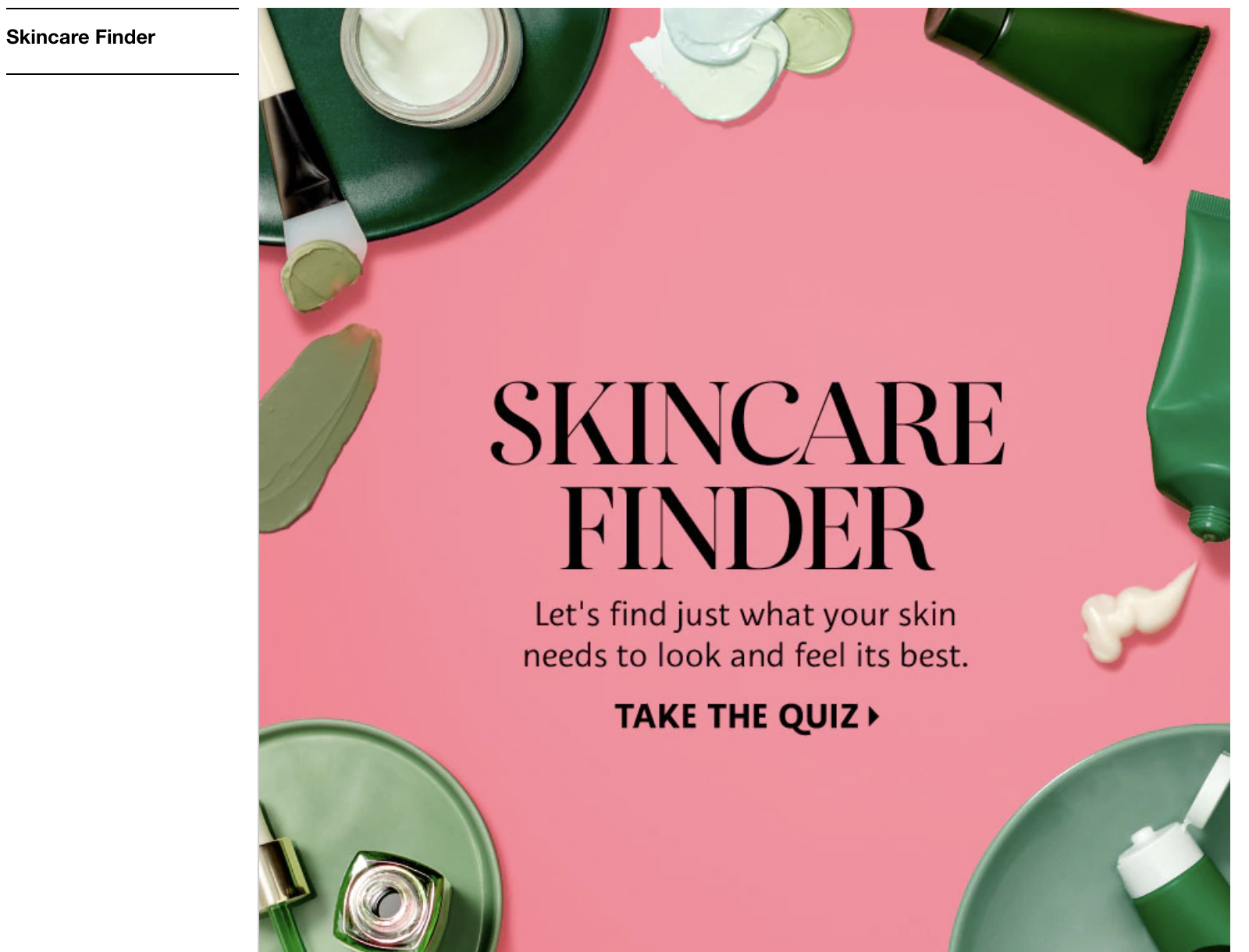
The “Help Me Choose” section contains a series of guides and quizzes designed to help customers find the products they’re looking for. Not only did this reduce confusion, but it helped customers make better-informed purchasing decisions.
Every type of product Sephora sells has a “Help Me Choose” section that customers can access.
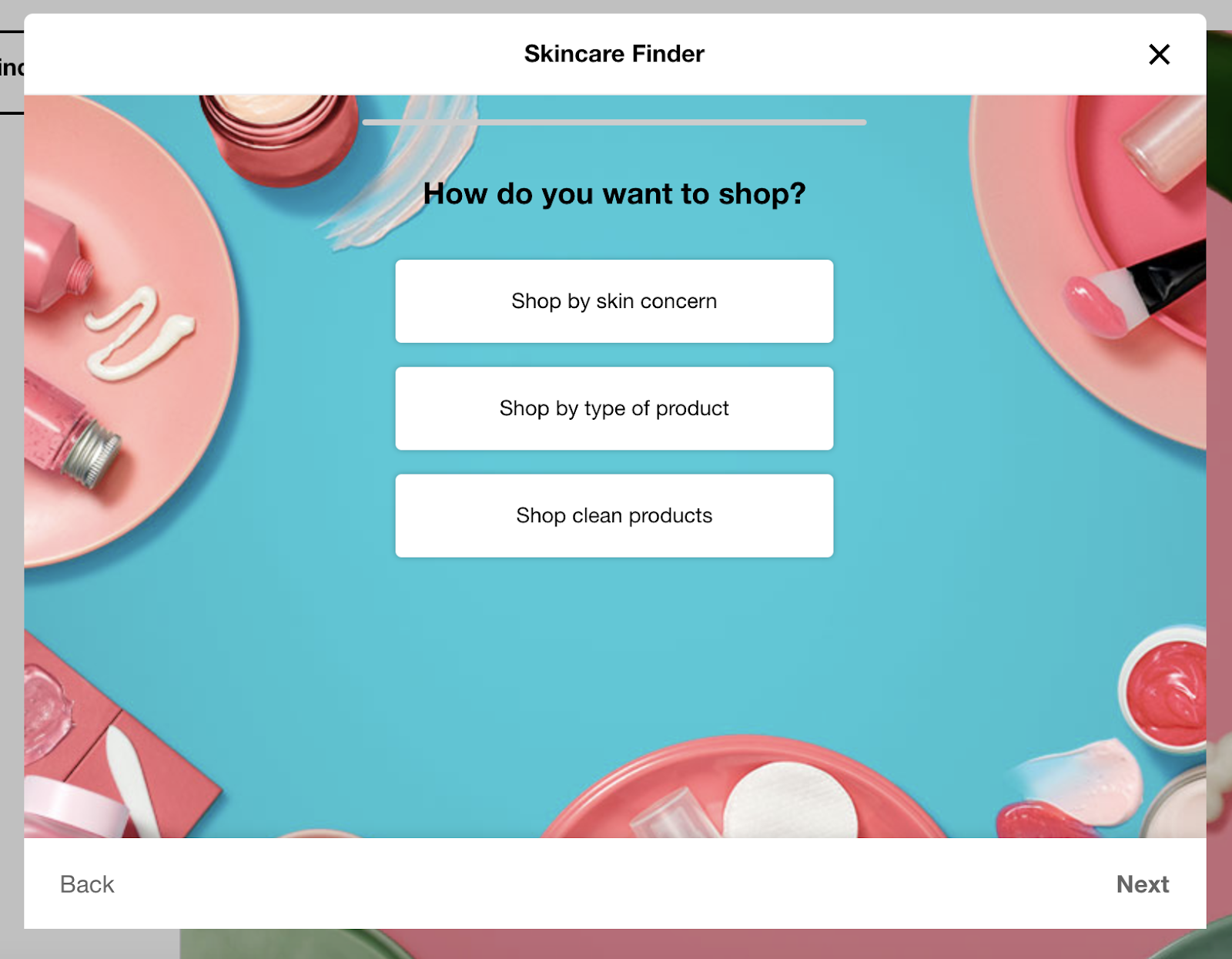
The quizzes are designed to better understand the customer’s intent. How customers answer the questions will determine which products are recommended to them. That way, they can get a personalized shopping experience that aligns with their needs and preferences.
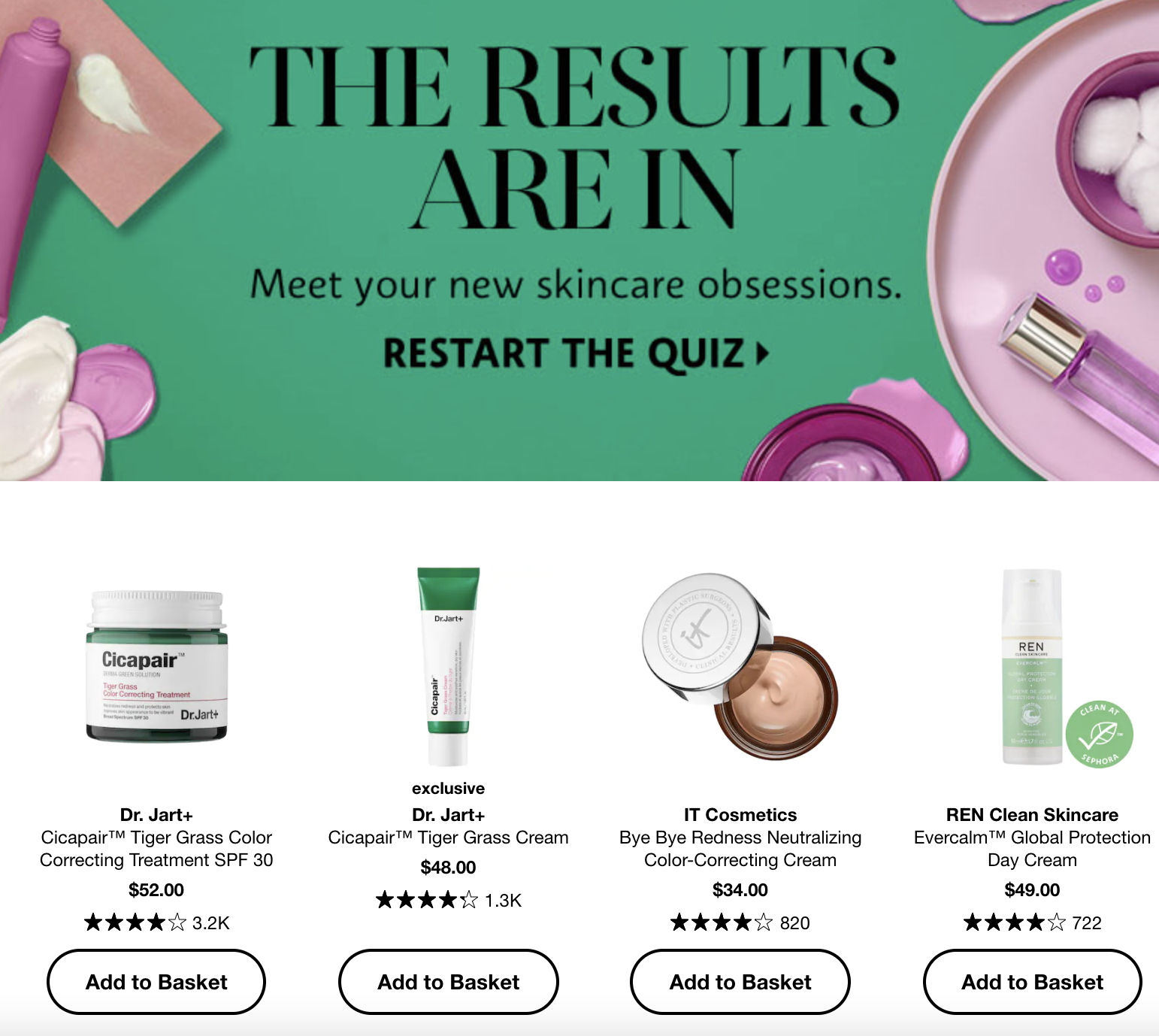
Once the customer has completed the quiz, they’ll be given a list of product recommendations. They can see how other customers rated the products, which can help them make an informed purchasing decision.
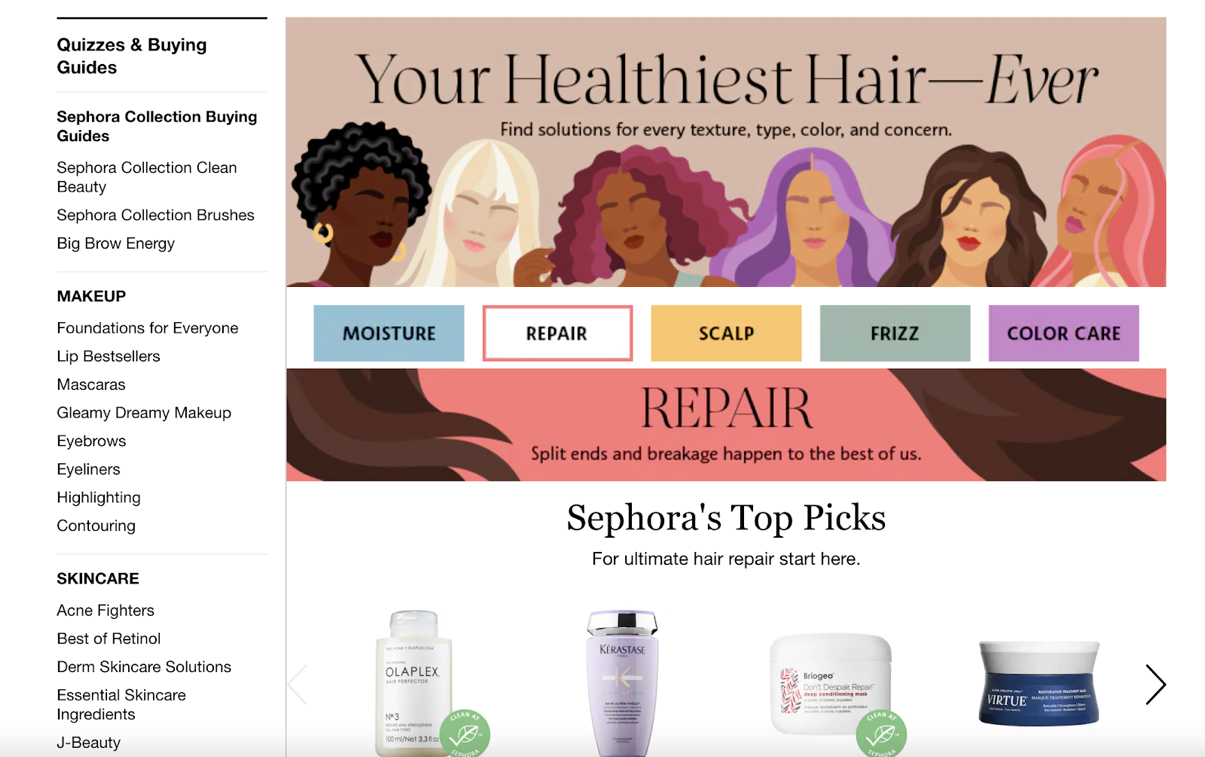
Sephora’s guides are similar to their quizzes. The key difference is that customers select the desired outcomes they’re looking for, rather than answering a series of questions.
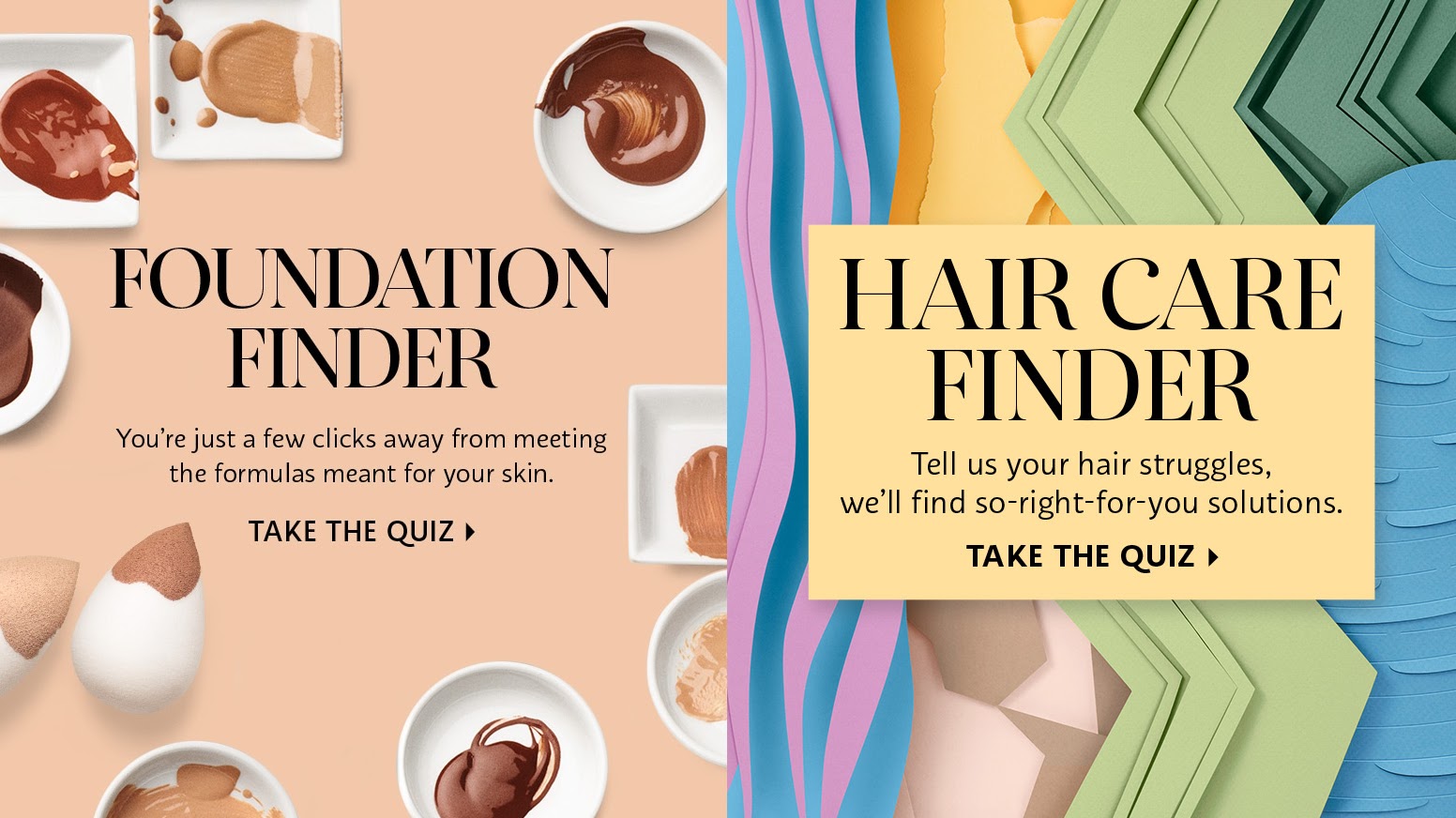
Leaving no stone unturned, Sephora uses a multiple-channel acquisition program to generate leads. By advertising their quizzes and guides on social media platforms like Facebook and Instagram, they can engage more potential customers, increase brand awareness, generate more site visitors to look at recommended products and prepare more visitors for the actual sales journey.
Step 6: Optimize customer experience
When you shop online, you shop for convenience. You want to find what you’re looking for without any hassle or confusion. When your onsite journey is quick and easy, you’re more likely to complete your purchase. When it’s not, you abandon your cart.
Sephora understands the need for an optimal customer sales journey strategy, which is why they make sure their website is easy for customers to navigate.

When you visit Sephora’s website, you’ll notice that all of their products are in different categories. If you’re:
- Looking for products from a specific brand, like Sephora Collection or Urban Decay, select the Brands category
- Looking for lipstick, you can browse the Makeup category
- Looking for moisturizer, browse the Skincare category
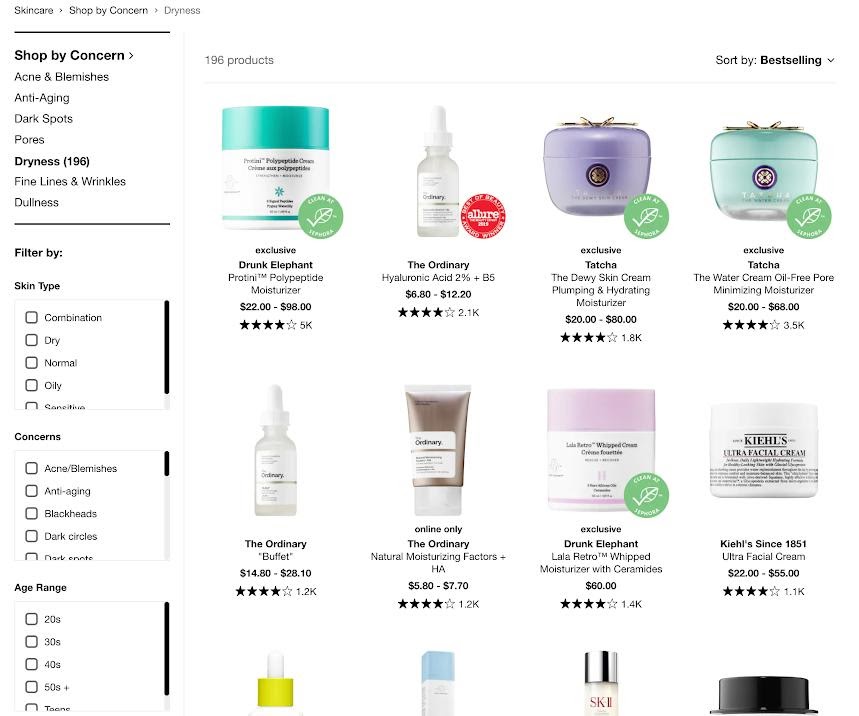
Sephora lets customers choose from a wide range of filters when browsing products. That way, they don’t have to waste time scrolling through items they don’t want or need. Some of these filters include:
- Skin type
- Concerns / issues to address
- Product targeted for a specific age range
- Ingredients
- Brand
- Size
- Type of product (e.g., serum, cream, gel, etc.)
- Price range
Products that are considered clean, meaning they’re free of chemicals like sulfates and parabens, receive a “Clean at Sephora” badge at the bottom of the picture. Products that have won awards also have a badge indicating the award won. It adds an extra layer of social proof, which can help drive conversions.
Step 7: Lead unsure visitors through the sales journey
If you visit Sephora’s website, there’s a chance you already know what to expect to find there because you already know the brand.
But if you don’t know what to find on their website (or you simply don’t know what to buy), Sephora has made browsing easier. That way, you can find the product that’s right for you.
Sephora did this by designing their online store to:
- Minimize confusion and decision fatigue
- Make navigation easier
- Guide customers down the sales journey
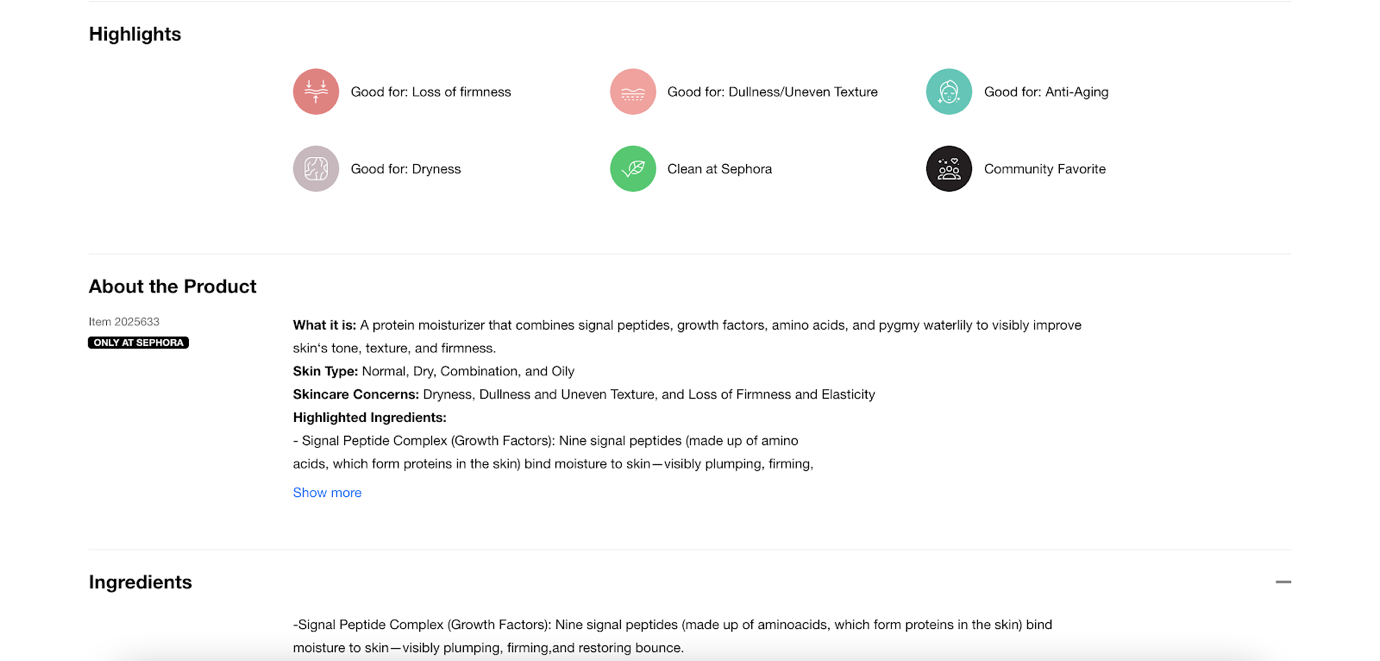
One way Sephora did this was by adding important product information that customers may be interested in. This info includes things like:
- Key ingredients
- More information about the product (its purpose, who it’s for, etc.)
- Major benefits of using the product
The goal is to persuade visitors to complete their purchases, while helping them make informed buying decisions.
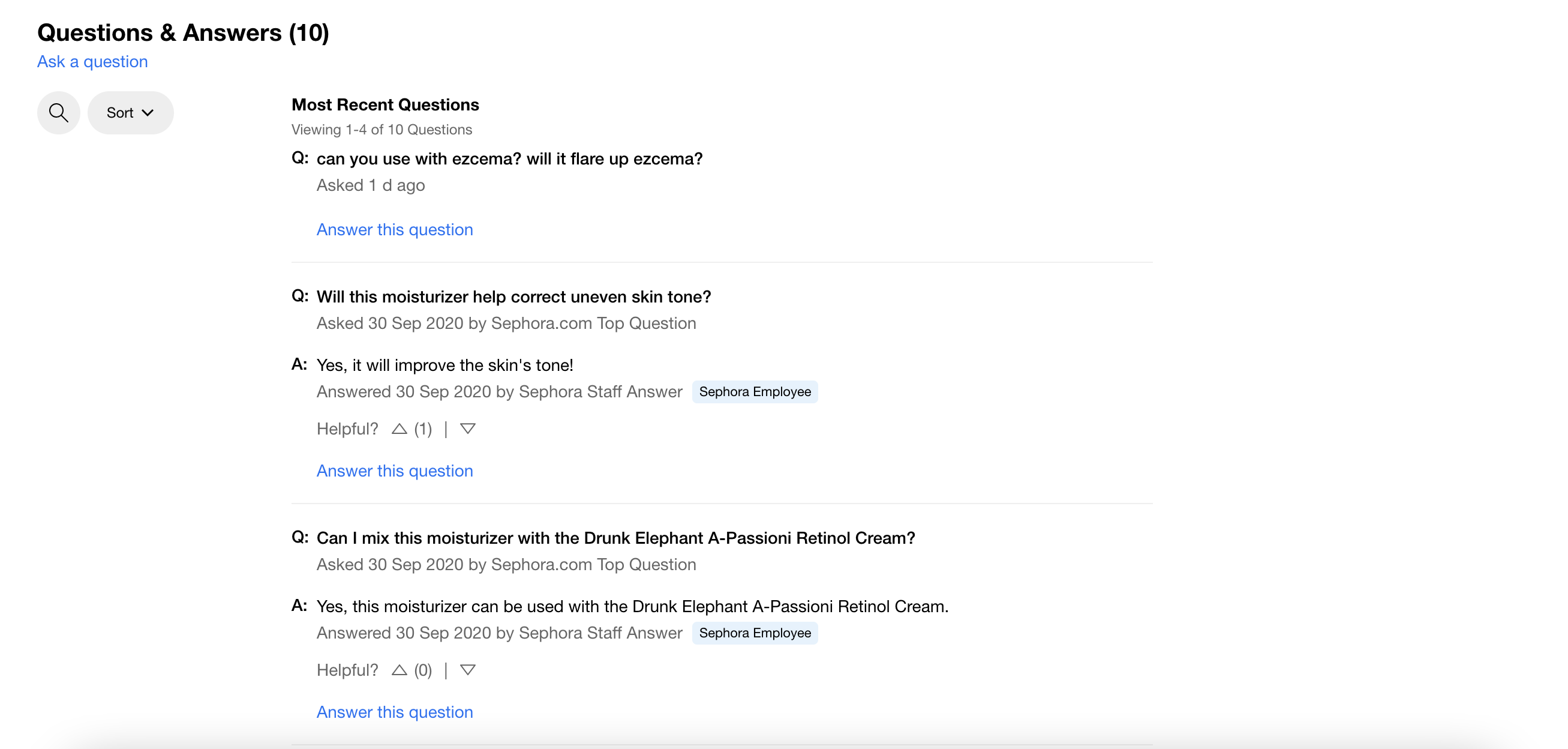
Some customers need a little more information before they decide whether to purchase an item or not. That’s why Sephora added a “Questions & Answers” section to their product pages.
Here, visitors can see questions that other customers have asked. If their concerns still aren’t addressed, they can ask their questions and will be quickly answered by a Sephora employee.
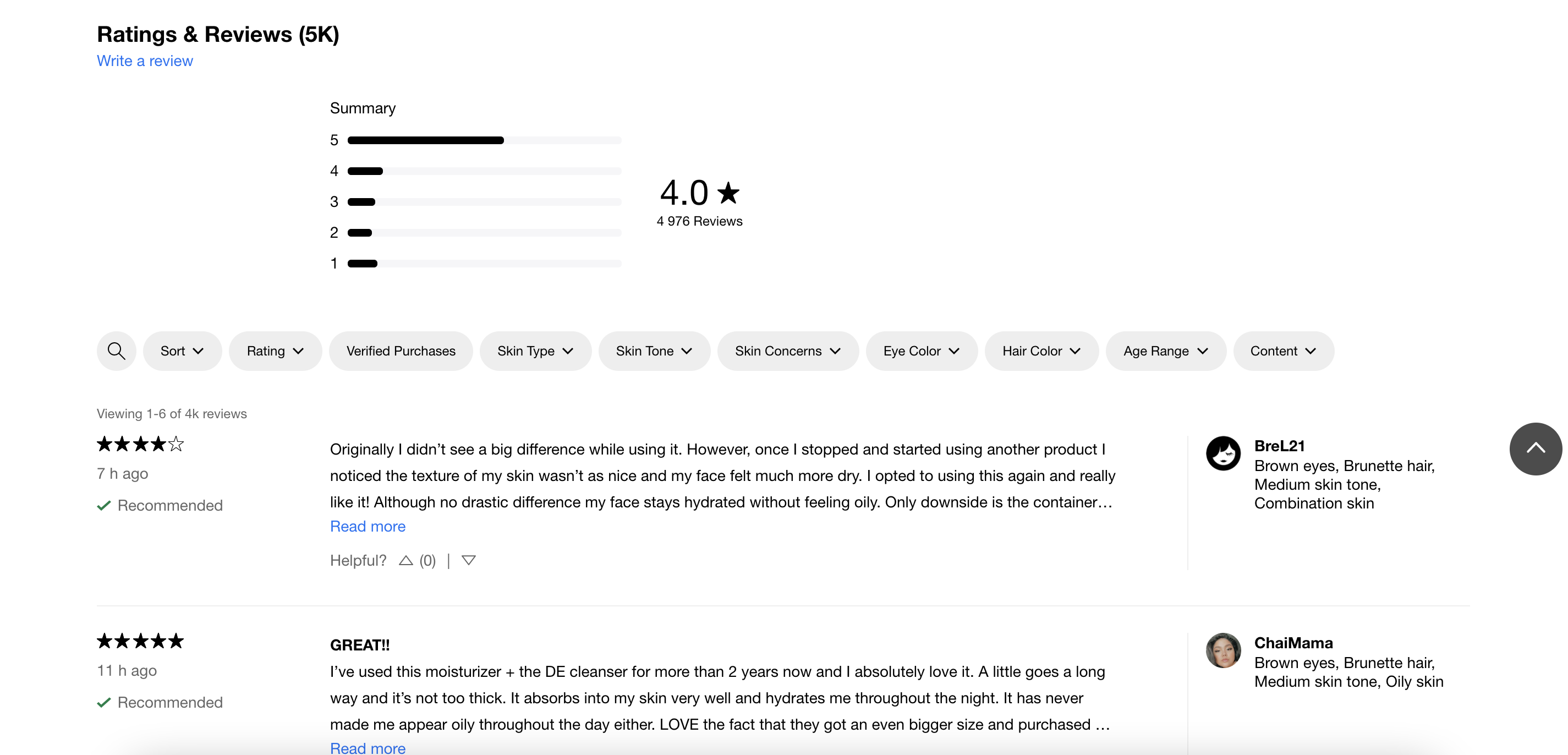
They include a review section, so visitors can see how other customers liked the product. Social proof is always a great way to drive sales. But when you’re in the cosmetics industry, reviews are important.
Customers need to be certain that makeup and other beauty supplies work well with things like their skin tone, hair color, hair texture, face shape, and more. It helps interested buyers determine whether a product will meet their unique needs and/or complement their features.

Finally, Sephora allows customers to upload photos to accompany their reviews. Prospective buyers can see how the product looks on someone else and whether it’s something they’d be interested in buying.
All the strategies mentioned above are effective at turning unsure visitors into customers.
Step 8: Converting unsure visitors through their mobile app
Sephora’s Android and iOS mobile apps offer the same sales journey optimization— as well as several other features designed to boost customer engagement.
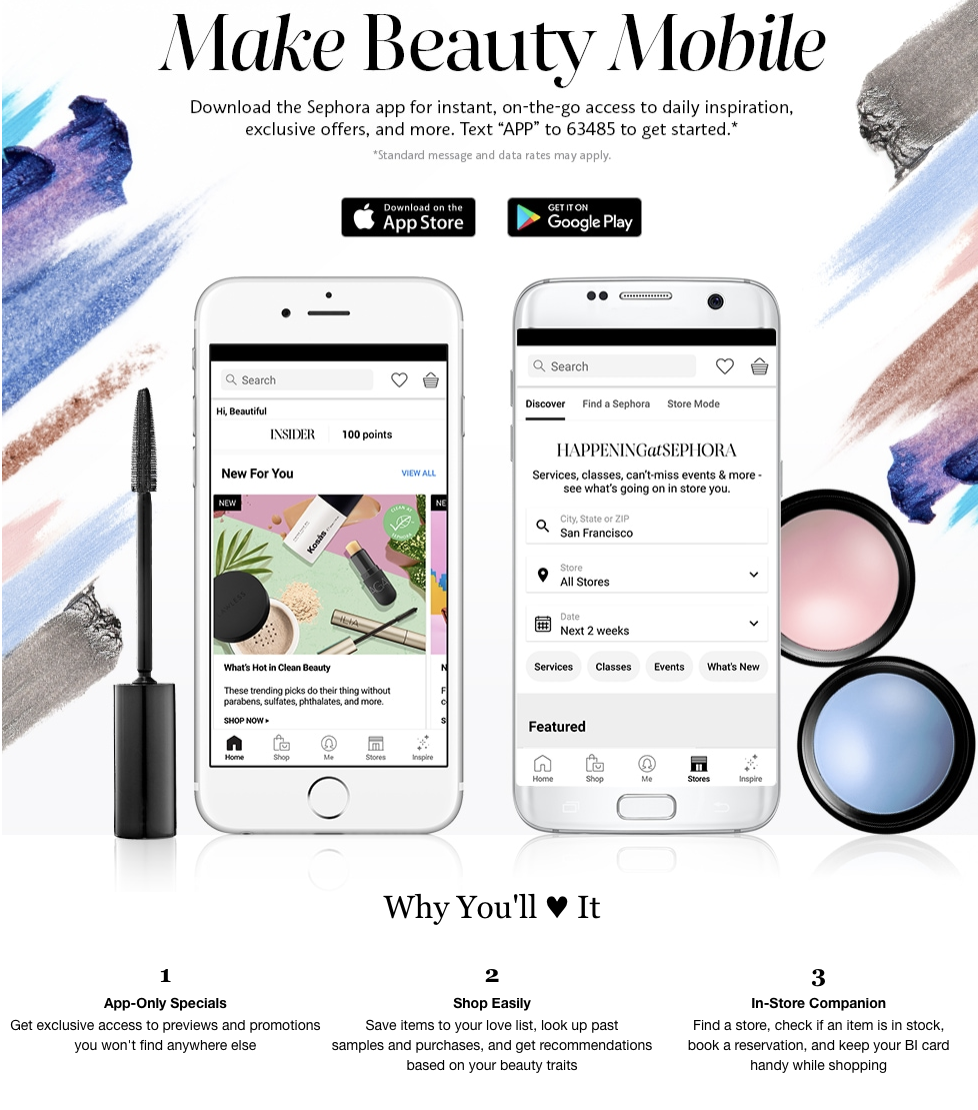
Here, customers can browse Sephora’s expansive inventory, get laser-targeted product recommendations, and join online health and beauty communities. The application is just as much of a social media app as it is an e-commerce platform.

One of the app’s coolest features is its community. This is where shoppers can go for tips, tutorial videos, and discussions with other community members.
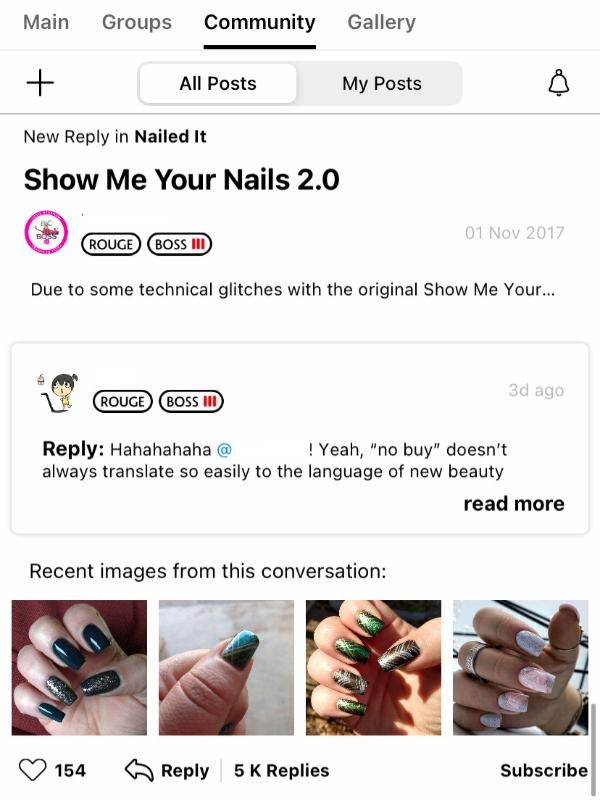
The community is where people go to…
- Ask and answer questions
- Give advice
- Share pictures, and more
The community feature is great for two reasons:
1. It keeps visitors engaged with the app
2. It allows visitors to discover new products
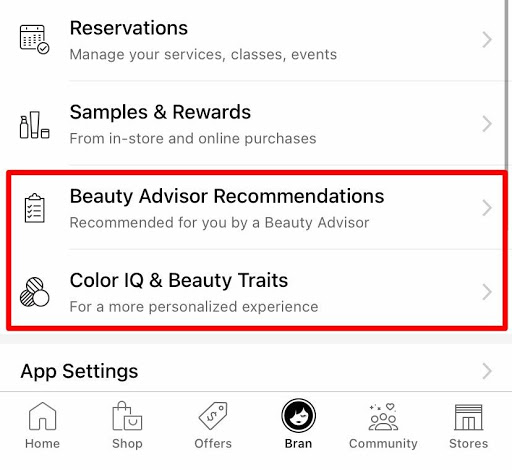
The “Beauty Advisor Recommendations” and “Color IQ & Beauty Traits” features are another great part of the app. These features create the same type of experience you get from visiting a physical Sephora store––relevant recommendations and professional help.
Sephora helps you find what you need. You purchase it. Everybody wins.
The recommendations page shows you a list of virtual events and upcoming events in your area. You can attend one or more events by booking a reservation.

These events include:
- Webinars on effective beauty routines
- Online and in-person events promoting specific products and/or brands
- Workshops and in-store promotion events
- Premium consultations with health and beauty professionals

Premium consultations pair customers with industry professionals who can assist them with any issues or concerns they have.
Many times these professionals are makeup artists who have already established a name for themselves in the industry by working with celebrities, or estheticians who specialize in skin health.
Customers know that the people recommending the right products are legit and it shows in their sales numbers.

The “Color IQ & Beauty Traits” section lets the visitor create a detailed customer profile. They can give information like skin tone, hair and eye color, and any other important details.
Sephora uses that information to target individuals with relevant information and advertisements.
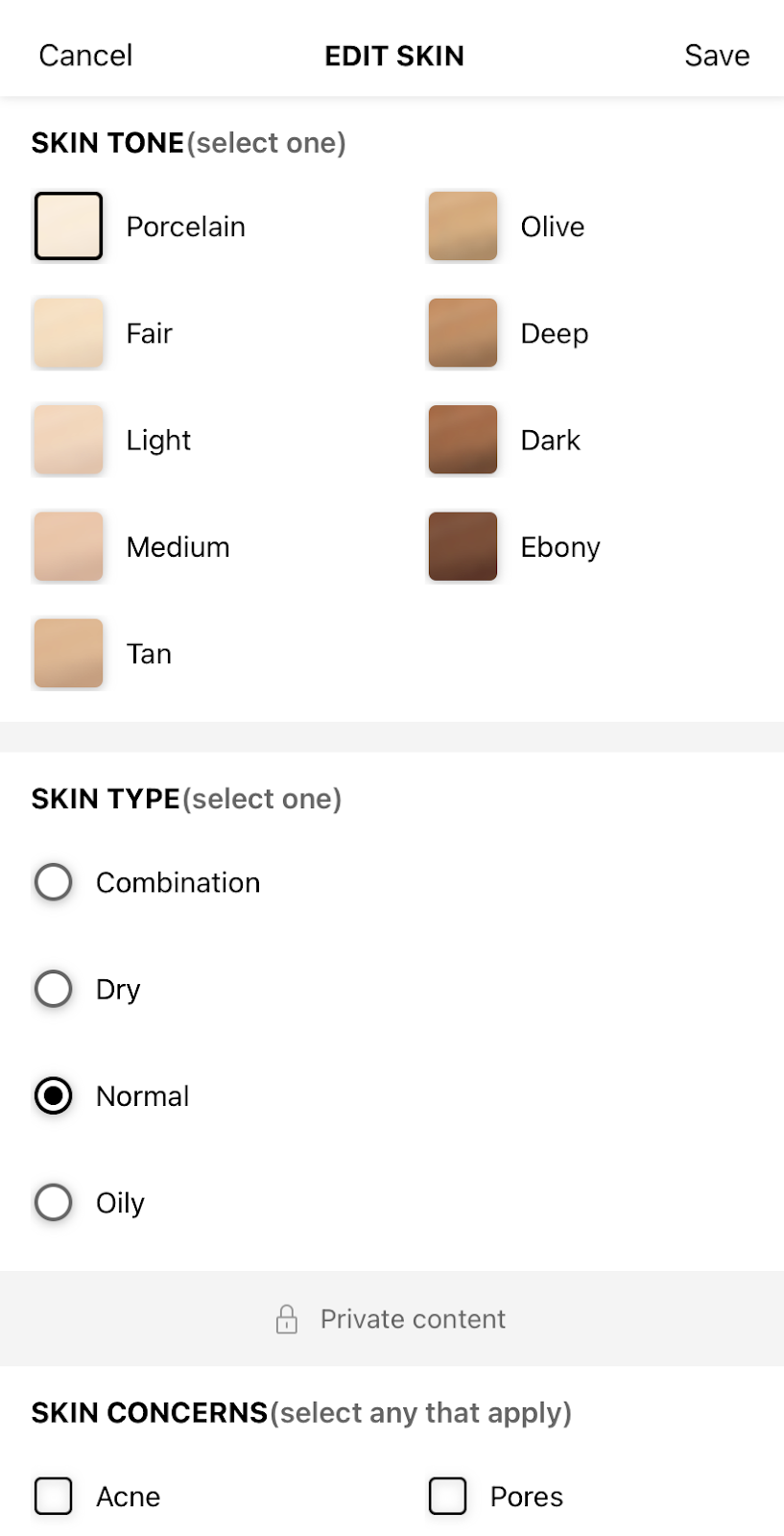
Suppose a customer enters the following information:
- Skin tone: Porcelain
- Skin type: Normal
- Skin concerns: Dark circles, dullness, and sun damage
Sephora will send product recommendations designed for their complexion, skin type, and concerns. It helps reduce decision fatigue by giving customers a custom-tailored list of products they need.
Step 9: Using YouTube to drive conversions
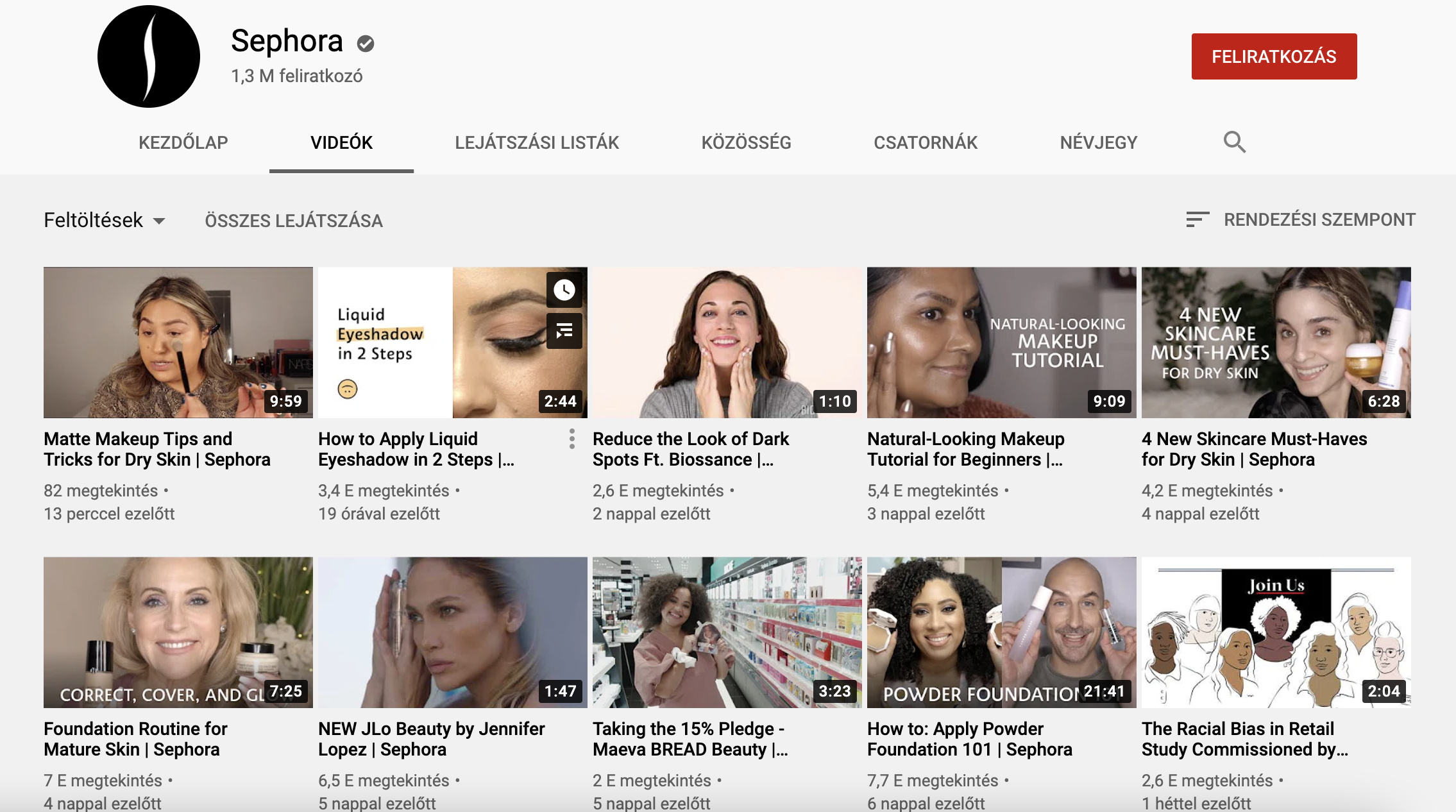
Sephora didn’t stop with their app and website. They turned to YouTube to engage with potential customers.
According to a Google study, more than 90% of shoppers admitted they discovered a brand or product by watching YouTube videos.
YouTube is one of the most effective social media marketing platforms. Sephora understood in their industry— customers visit social media for information and the latest beauty trends. They needed to engage with Millennials and Gen Zs over YouTube, so they posted videos of
- Makeup tips and tricks
- Advice for hair and skincare routines
- Step-by-step guides for creating specific looks using Sephora’s products
Suddenly, YouTube was an integral part of Sephora’s inbound marketing strategy and was used to
- Generate leads
- Improve brand awareness
- Promote products and drive sales
They took this same strategy to other social media platforms. As TikTok grew, so did Sephora’s presence. That way, they could reach out to Gen Zs while staying connected with Millennials.
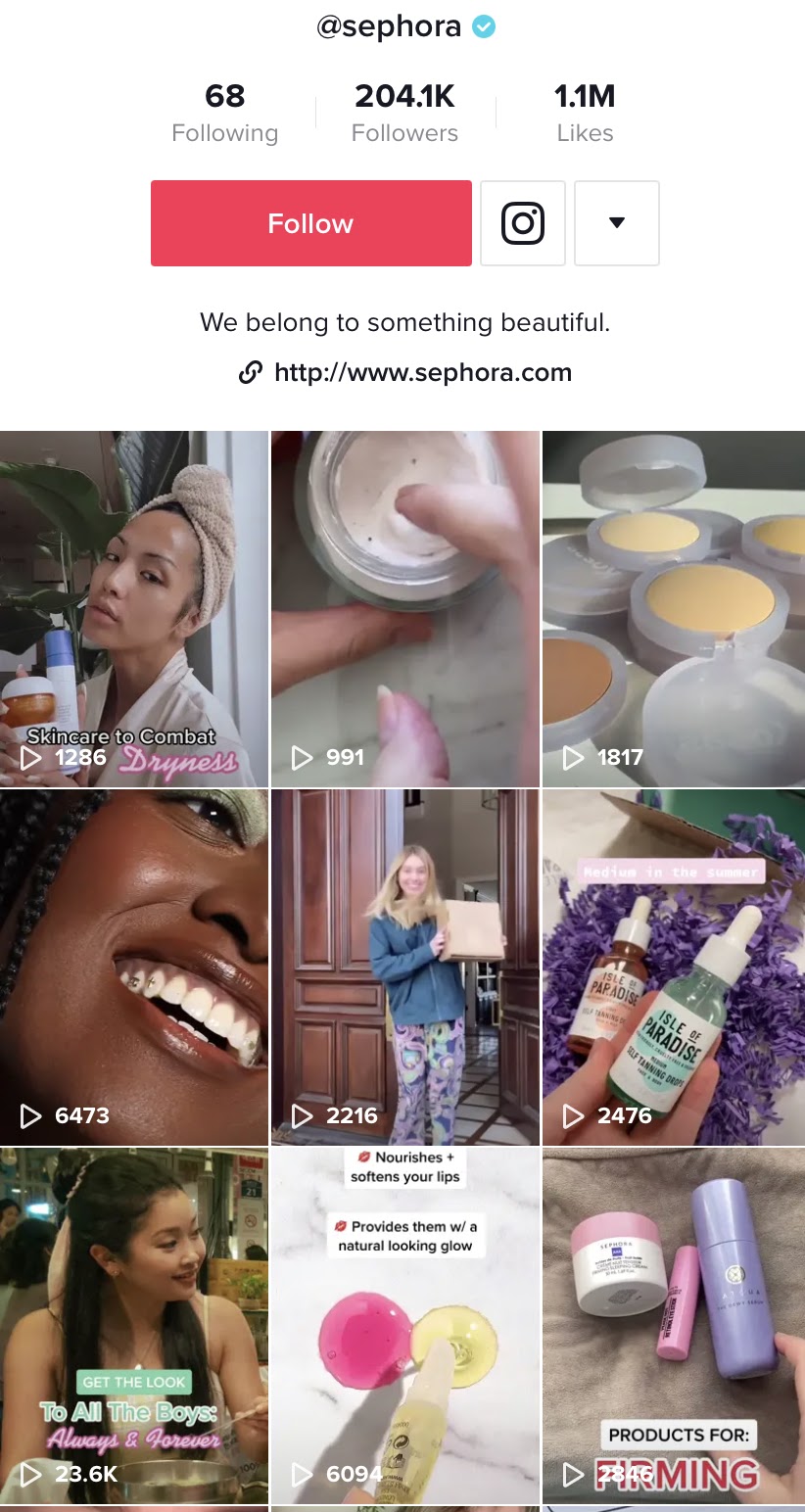
Step 10: Nudge eager customers to complete their purchases
Now that they tackled influencer marketing and optimized the sales journey, Sephora turned their attention to sales.
Sephora needed something to increase their average order value (AOV) and nudge customers to finalize their purchases.
So, how did they do it?
For starters, Sephora started giving free shipping to customers who spent $50 or more. It helped push up their AOV, meaning the customers spend more money on their orders. What’s more, this strategy can even reduce cart abandonment.
According to The Future of Retail 2019, free shipping motivates a staggering 77% of customers to complete their purchases.
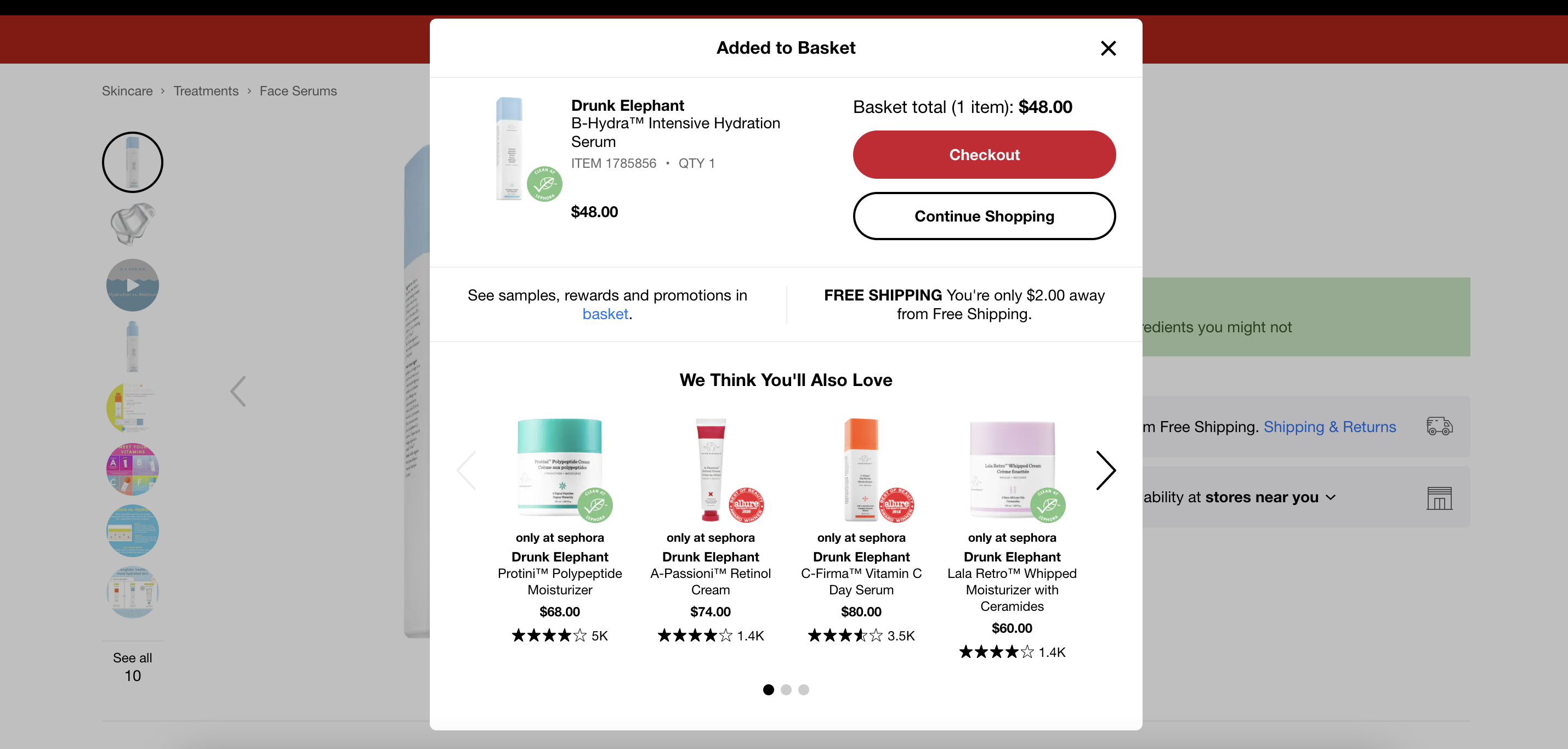
There’s no denying it. Customers want free, fast, and reliable shipping–– and they’ll remain loyal to the companies that can provide it.
But that’s not all. Sephora offers additional incentives, including:
- Discounts for shoppers who enroll in the Sephora Credit Card Program
- Free samples with every order
- A rewards program
They even let customers pay through Klarna, a service that allows shoppers to divide their purchases into four interest-free payments. All this goes a long way in persuading visitors to complete their purchases.
Step 11: Nurture long-term customer relationships
As the industry leader of cosmetic retail, Sephora needed a strategy that not only attracted new customers but retained existing ones. Studies show that a 5% increase in customer retention can boost profits by 25% or more. Just think about Sephora’s annual revenue and what a 25% increase means.
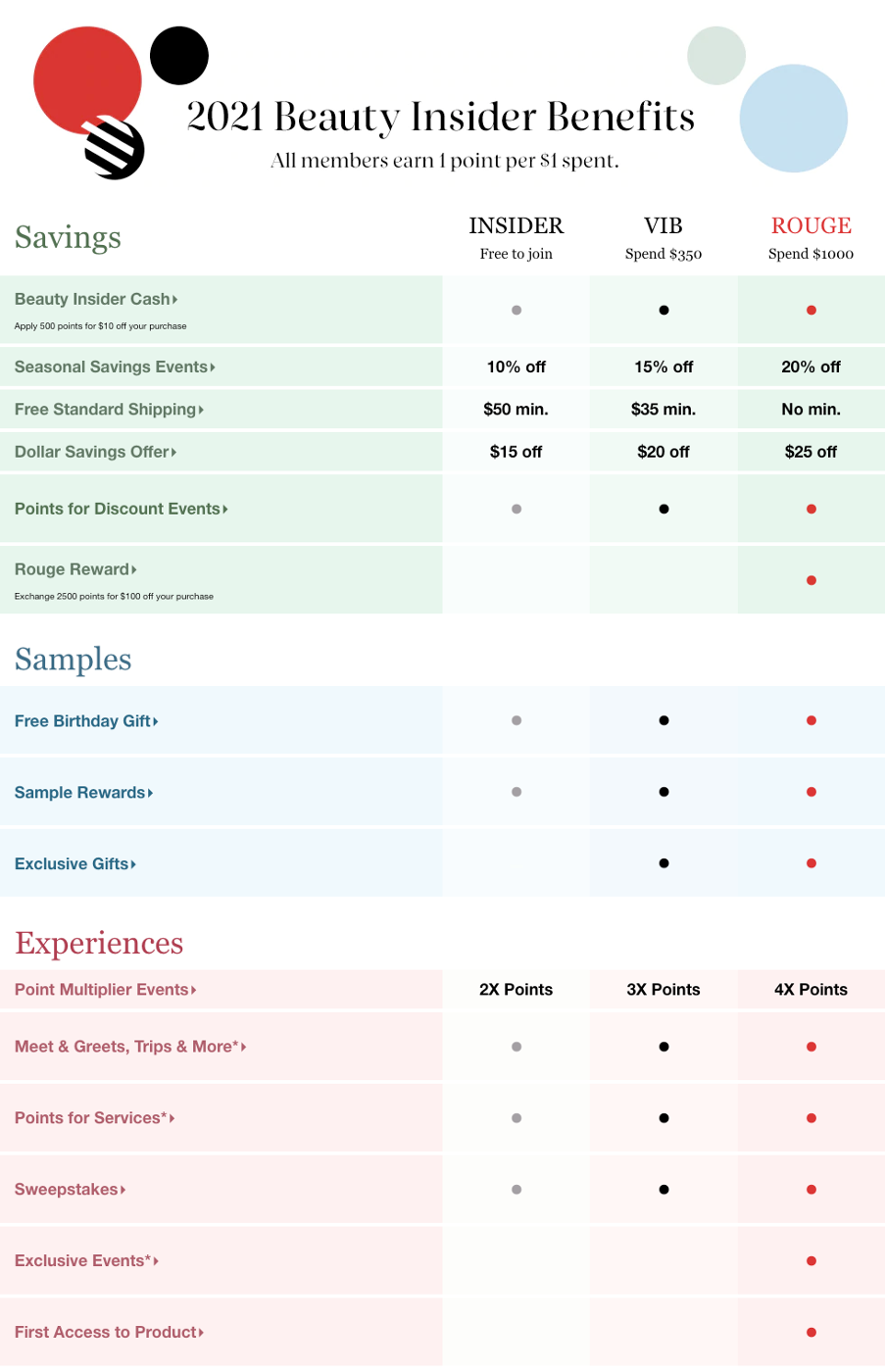
Sephora launched the Beauty Insider program, considered to be one of the top rewards programs in the industry. It uses a three-tiered membership to incentivize shoppers to come back every month. The tiers are:
1.Insider: Free for anyone to join
2.VIB (Very Important Beauty Insider): Eligible join after spending $350 a year
3.VIB Rouge: Eligible to join after spending $1000 a year
As customers spend more money, they advance tiers and gain more benefits. For example:
- Insiders gain 10% off Seasonal Savings Events
- VIBs gain 15% off
- Rouge customers gain 20% off
Customers that reach Rouge status unlock additional perks, like access to exclusive events and they get first dibs on special products.
Reward and loyalty programs are a successful way to increase sales and keep customers returning–– this is standard. But Sephora designed the Beauty Insider program differently than other rewards programs. Not only were they incredibly generous with their rewards, but they focused on creating meaningful experiences for their customers.
Studies show that emotional perks are the driving force behind brand loyalty for 75% of customers. That’s why Sephora offers once-in-a-lifetime experiences for their most loyal customers.
In the past, those experiences include:
- Receiving a set of Fenty Beauty cosmetics and a signed copy of The Rihanna Book
- A wine tasting at Francis Ford Coppola’s vineyard
- Consultations with top industry professionals
Step 12: Using dynamic advertisements
Sephora launched personalized advertisements over Facebook for new and existing customers.
The ads were custom-tailored to match the interests of the viewer, and existing customers that abandoned their carts were presented with retargeting ads. Sephora chose not to advertise to customers who recently purchased from them.
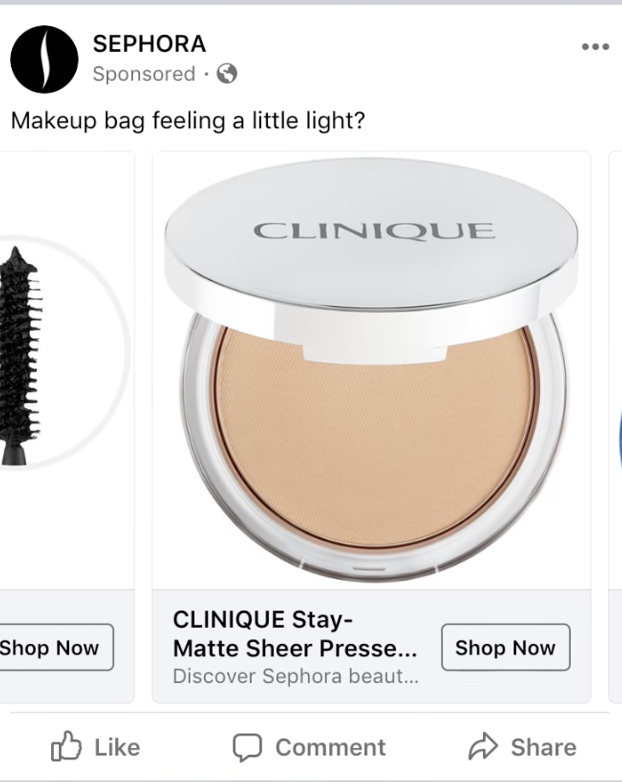
The result was overwhelmingly successful. The dynamic advertising campaign earned a
- 27% increase in new customer traffic online
- 19% increase in loyalty program sign ups
- Whopping 580% Incremental Return on Ad Spending
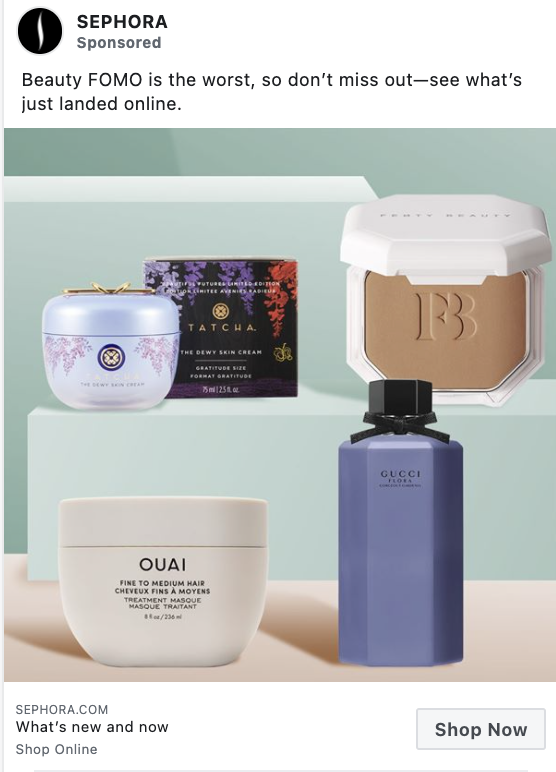
Sephora uses Facebook to advertise new products that users might be interested in.
Step 13: Building a community
In addition to traditional marketing strategies, Sephora increased customer retention by building a community that people wanted to be a part of. The company devoted a lot of time and effort into nurturing relationships through:
- Online and in-person events
- Discussion forums on their app and e-commerce site
- Beauty tutorials
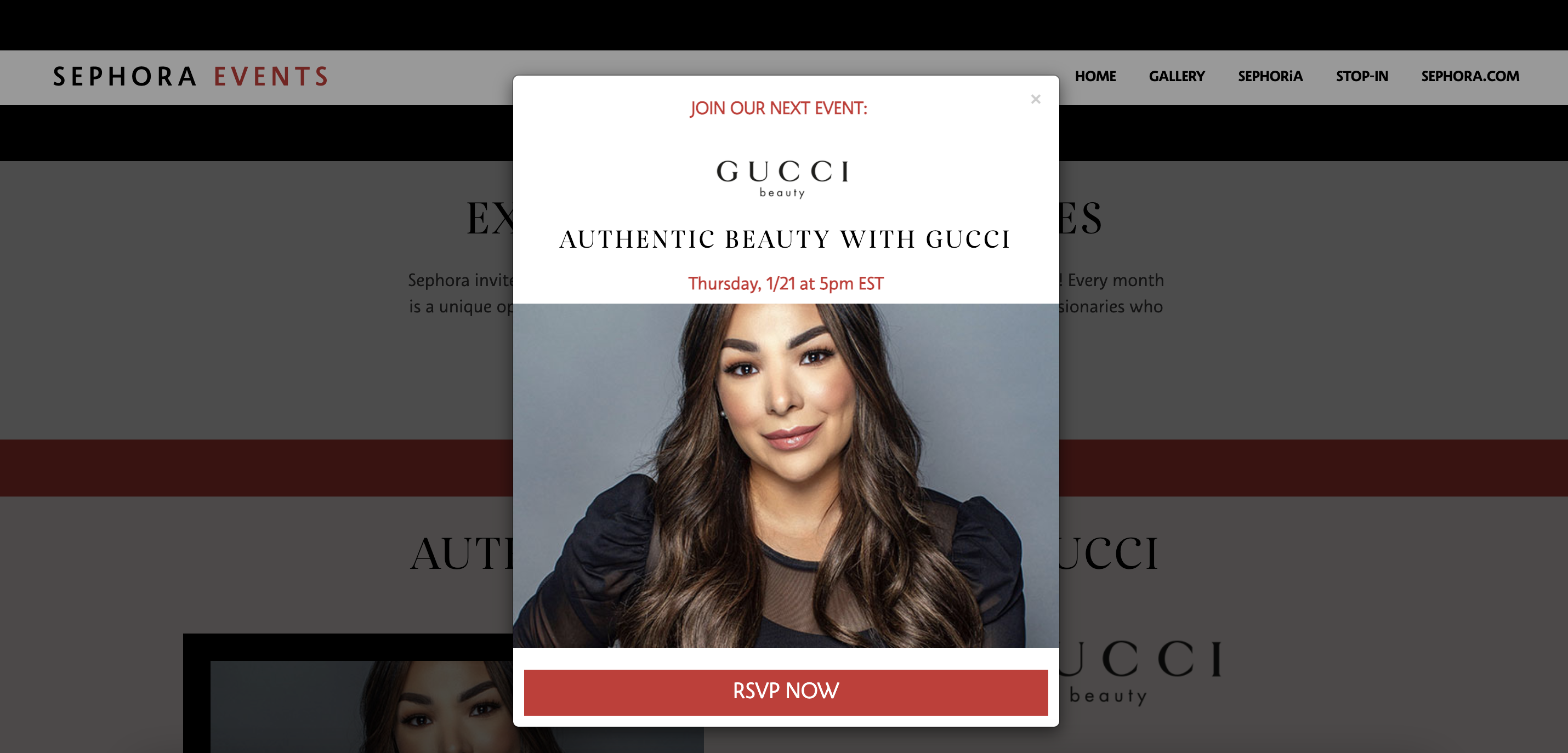
Sephora was also one of the first retail brands to incorporate masterclasses into their overall marketing strategy. They enabled them to strengthen their relationship with consumers through an effective inbound marketing strategy that kept customers engaged and loyal to the brand.
Putting it all together
The driving force behind Sephora’s successful marketing strategy is the commitment to creating a better customer experience and staying in touch with younger generations of buyers.
They created a marketing strategy that sought to understand their customers’ needs by listening and learning from their customers and creating an online journey that motivates customers to spend more.
And guess what? It worked.
Sephora has continued to flourish while other retailers struggled, and it’s all because they put their customers first.
